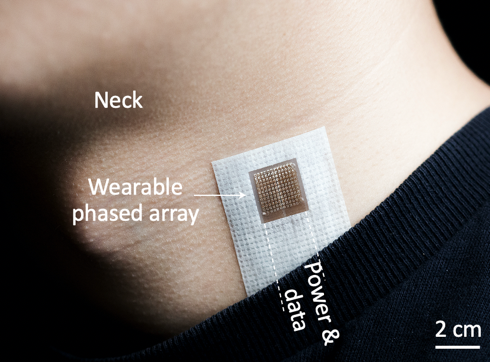17758013020 Chen Chen
-
-
-
17816169069 Jinglin Jian
-
17758013020 Chen Chen
17816169069 Jinglin Jian

Associate Professor and Jacobs Faculty Scholar
University of California San Diego
Dr. Sheng Xu earned his B.S. degree in Chemistry from Peking University and his Ph.D. in Materials Science and Engineering from the Georgia Institute of Technology. Subsequently, he pursued postdoctoral studies at the Materials Research Laboratory at the University of Illinois at Urbana-Champaign. His research group is interested in the development of new materials and fabrication methods for soft electronics, with a particular focus on wearable ultrasound technology. His research has been presented to the United States Congress as a testimony to the importance and impact of funding from the National Institutes of Health. He has received many awards and honors, including the NIBIB Trailblazer Award, NIGMS MIRA, Sloan Fellowship, Bau Family Award, ETH Zürich Materials Research Prize for Young Investigators, MRS Outstanding Early Career Investigator Award, and a finalist of the Blavatnik National Awards for Young Scientists.
Plenty of room under the skin
Sheng Xu
Department of NanoEngineering and Chemical Engineering, University of California San Diego, 9500 Gilman Drive, MC 0448, 92093 La Jolla CA, USA (shengxu@ucsd.edu)
Abstract
The use of wearable electronic devices that can acquire vital signs from the human body noninvasively and continuously is a significant trend for healthcare. The combination of materials design and advanced microfabrication techniques enables the integration of various components and devices onto a wearable platform, resulting in functional systems with minimal limitations on the human body. Physiological signals from deep tissues are particularly valuable as they have a stronger and faster correlation with the internal events within the body compared to signals obtained from the surface of the skin. In this presentation, I will demonstrate a soft ultrasonic technology that can noninvasively and continuously acquire dynamic information about deep tissues and central organs. I will also showcase examples of this technology's use in recording blood pressure and flow waveforms in central vessels, monitoring cardiac chamber activities, and measuring core body temperatures. The soft ultrasonic technology presented represents a platform with vast potential for applications in consumer electronics, defense medicine, and clinical practices.

Figure 1: Photograph of a wearable ultrasound phased array on the human neck for color Doppler blood flow monitoring.
References
1 Hu, H. et al. Stretchable ultrasonic transducer arrays for three-dimensional imaging on complex surfaces. Science Advances 4, eaar3979 (2018).
2 Wang, C. et al. Monitoring of the central blood pressure waveform via a conformal ultrasonic device. Nature Biomedical Engineering 2, 687-695, doi:10.1038/s41551-018-0287-x (2018).
3 Sempionatto, J. R. et al. An epidermal patch for the simultaneous monitoring of haemodynamic and metabolic biomarkers. Nature Biomedical Engineering 5, 737-748, doi:10.1038/s41551-021-00685-1 (2021).
4 Wang, C. et al. Continuous monitoring of deep-tissue haemodynamics with stretchable ultrasonic phased arrays. Nature Biomedical Engineering 5, 749-758, doi:10.1038/s41551-021-00763-4 (2021).
5 Gao, X. et al. A photoacoustic patch for three-dimensional imaging of hemoglobin and core temperature. Nature Communications 13, 7757, doi:10.1038/s41467-022-35455-3 (2022).
6 Lin, M., Hu, H., Zhou, S. & Xu, S. Soft wearable devices for deep-tissue sensing. Nature Reviews Materials 7, 850-869, doi:10.1038/s41578-022-00427-y (2022).
7 Hu, H. et al. A wearable cardiac ultrasound imager. Nature 613, 667-675, doi:10.1038/s41586-022-05498-z (2023).
8 Hu, H. et al. Stretchable ultrasonic arrays for the three-dimensional mapping of the modulus of deep tissue. Nature Biomedical Engineering, doi:10.1038/s41551-023-01038-w (2023).
9 Lin, M. et al. A fully integrated wearable ultrasound system to monitor deep tissues in moving subjects. Nat. Biotechnol., doi:10.1038/s41587-023-01800-0 (2023).